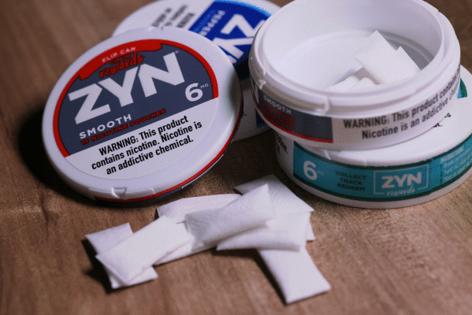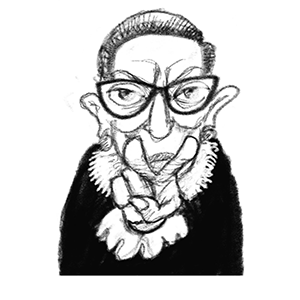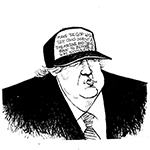As Sweden regulates nicotine products, US pulls back
Published in News & Features
STOCKHOLM — In its infancy, the Swedish market for nicotine pouches was akin to a sort of Wild West. There were limited industry-led standards and no age restrictions for the products until 2022.
The United States has been more cautious, authorizing fewer products and implementing more safeguards earlier on.
But now, the U.S. is entering its own uncharted territory. Sweeping changes to the nation’s regulatory landscape could dampen the ability to authorize new products, enforce existing regulations and make progress on smoking cessation.
Sweden’s era of limited regulation for such smokeless tobacco products could foreshadow how the U.S. market will change with fewer guardrails. Larger players in the tobacco and nicotine space see a lack of regulation as an easy opportunity for smaller startups to skirt industry-led policies related to content or marketing.
“The first thing I did during that time was that I tried to contact the Ministry of Health. We need to have regulation in place,” said Patrik Hildingsson, vice president of communications and public affairs at Swedish Match, a subsidiary of Philip Morris International. “Unfortunately, it took five years for the government to have regulation in place.”
In early April 2025, the United States gutted staff at the Food and Drug Administration’s Center for Tobacco Products and eliminated the Centers for Disease Control and Prevention’s Office of Smoking and Health.
Without the staff dedicated to these efforts, it’s unclear which activities will still be prioritized.
“By then, the industry will have established themselves and their new products,” said Karin Sundin, a member of the Social Democrats in Sweden’s parliament, referring to nicotine pouches in the United States. “And, I mean, in two and three years, people are already heavily addicted to this.”
Regulatory gaps
Sweden’s 2022 law created new regulatory authorities for nicotine products and implemented age restrictions for purchasing non-tobacco, nicotine-like pouches.
The government forbids all consumer marketing for tobacco, which includes traditional snus and cigarettes, and limits marketing of pouches to printed media and some digital services. Manufacturers and points of sale cannot market pouches on video-sharing sites, but marketing is commonly used in other media like podcasts. Those ads must not target or depict users under the age of 25.
Industry proponents and anti-tobacco groups disagree on whether these parameters are enough, but there is general alignment on these steps. Some anti-tobacco advocates have called for a higher minimum purchase age or a ban on all marketing.
But this authority does allow the government to address some issues.
In March, the Swedish Consumer Agency found that musician Fröken Snusk violated some of the age-related guardrails in promoting her nicotine brand, Frökens Nikotin. The singer, who wears a mask to conceal her identity, revealed in April that she was below the legal age to market nicotine products. She has since stepped away from her nicotine brand.
The FDA’s Center for Tobacco Products enforces that counterpart process to control youth marketing or the sale of unauthorized products in the United States. Last year, then-Senate Majority Leader Charles E. Schumer, D-N.Y., called on the FDA and Federal Trade Commission to open a probe into how Zyn, Swedish Match’s line of nicotine pouches, markets to youth.
The U.S. faced its own regulatory gray area between 2014 and 2016, before the FDA finalized rulemaking to regulate products that use nicotine derived from tobacco. Congress closed the loophole for synthetic nicotine in its March 2022 omnibus. But without adequate staffing, existing laws and regulations might not matter if agency personnel aren’t there to enforce them.
Despite regulation, illegal products are still available online. That could proliferate as a number of nicotine products remain available under what is known as pre-market authority, a designation that allows companies to sell some nicotine and tobacco products before they have been authorized. In the United States, most nicotine and tobacco products that weren’t sold commercially prior to 2007 need to have a pre-market authorization order. Bigger companies that can afford to seek different authorizations also could face a further slowdown on their applications.
The FDA can grant what is called a Modified Risk Tobacco Product designation to products that are proven to have lower health risks than other types of tobacco products. Legally, only these products can claim reduced health effects in their marketing. The process to seek this status is time-consuming and expensive. Enforcement gaps from insufficient staffing could lead to increased sales of unregulated products making claims or skirting pre-market authority rules.
The domestic changes go beyond the FDA.
The closing of the CDC’s Office of Smoking and Health means sunsetting the National Youth Tobacco Survey, National Tobacco Control Program Funding and programs like CDC’s Tips From Former Smokers. The survey has been an important tool for monitoring changes in youth use for both public health experts and the industry.
“These actions risk undermining progress that has been made in reducing the death, disease, and addiction caused by tobacco use,” a group of Democratic senators wrote in a letter sent to HHS, CDC and FDA last week. The staff reductions “will cripple FDA’s ability to establish product standards to reduce the appeal, addictiveness, and harm of tobacco products.”
The Department of Health and Human Services did not respond to a request for comment on how staffing reductions would affect these programs.
Industry-led
There are ways in which Swedish regulation has been left to industry.
“It’s better to have a good regulation to begin with than forcing the industry to regulate themselves, which can be odd, and especially, it can change once the political side actually regulates it,” said Tobias Andersson, a member of the Sweden Democrats in parliament who chairs the Committee on Industry and Trade. “It’s better to do it right from the beginning.”
Swedish manufacturers use an industry system to rank the strength of nicotine in products. It’s not standardized, meaning brands use different baseline systems for levels 4, 5 or 6. The industry standard is to not sell products with more than 20 milligrams of nicotine.
“That is not part of the legislation. That is simply something that is created in the industry. There’s no guidance; there’s no rules or framework,” said Daniel Wiberg, CEO of Stingfree AB, a brand of nicotine pouches sold in Sweden and the United States.
Stingfree’s strongest product is 20 milligrams per gram or 11 milligrams per pouch.
“Some of these products, one pouch, has as much nicotine as an old entire can of tobacco,” said Wiberg, who believes there should be a formal cap. “What that cap should be … that’s a bit more difficult.”
The U.S., by contrast, does not cap nicotine.
Instituting caps on tobacco products is complicated because of how consumers use different products and how nicotine is absorbed by the body.
“It would be a tricky thing to do,” said Brian Erkkila, director of regulatory science at Philip Morris International. “I worked in the toxicology department at the FDA, and if I had to write that reg, I would say, it would be really hard.”
The FDA proposed placing limits on how much nicotine is allowed in cigarettes and some other combustible tobacco products in January to help curb smoking. The Trump administration later rescinded the rule.
©2025 CQ-Roll Call, Inc., All Rights Reserved. Visit cqrollcall.com. Distributed by Tribune Content Agency, LLC.







Comments